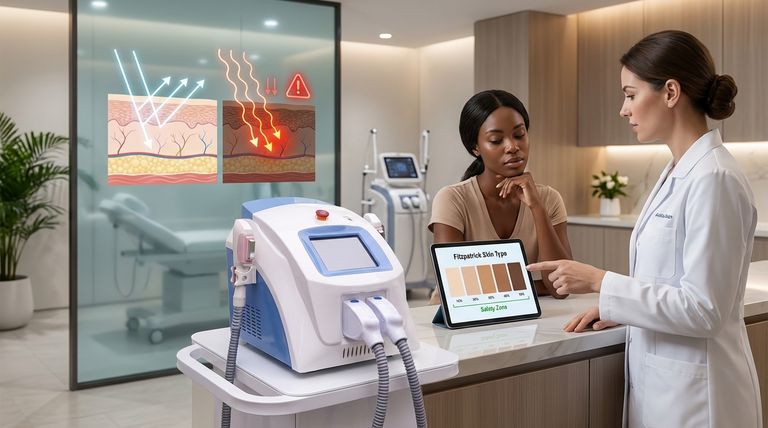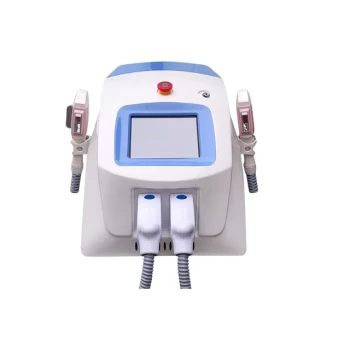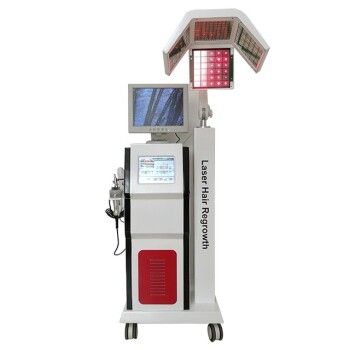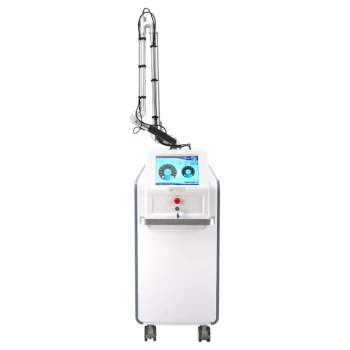No, IPL is not safe or effective for all skin types. Intense Pulsed Light (IPL) treatments carry significant risks for darker skin tones, and they are strictly contraindicated for the darkest skin type (Fitzpatrick type VI) due to a high risk of burns and pigmentation damage.
The core principle of IPL is the contrast between the skin and the target. The technology works by targeting melanin (pigment), and when the skin itself contains high levels of melanin, the IPL device cannot distinguish between the unwanted hair or dark spot and the surrounding skin, creating a significant safety issue.

How IPL Technology Interacts with Skin
The Role of Melanin
IPL devices emit broad-spectrum light pulses. This light energy is absorbed by melanin, the pigment that gives color to our skin and hair.
This absorption process converts light into heat. The goal is to generate enough heat within the target (like a hair follicle or a sun spot) to damage or destroy it.
Targeting the Contrast
For the treatment to be both safe and effective, the target must have a much higher concentration of melanin than the surrounding skin.
This creates a clear contrast. The light energy is preferentially absorbed by the darker target, leaving the lighter surrounding skin relatively unharmed.
Why Dark Skin Poses a High Risk
In individuals with darker skin tones (Fitzpatrick types V and VI), the skin itself is rich in melanin.
When an IPL device is used, the melanin in the skin competes with the melanin in the target for light absorption. This causes the skin to heat up dangerously, which can lead to burns, blisters, scarring, and permanent pigmentation changes.
Understanding the Fitzpatrick Skin Scale
To assess risk, professionals use the Fitzpatrick scale, which classifies skin based on its amount of pigment and its reaction to sun exposure.
Type I to Type III
These skin types range from very fair and always burning (Type I) to fair or light olive skin that tans gradually (Type III). These individuals are typically the ideal candidates for IPL, especially if they have dark hair, as the contrast is very high.
Type IV
This is a light brown or olive skin tone that tans easily. Treatment is possible but requires significant expertise and caution. The risk of side effects begins to increase substantially with this skin type.
Type V and VI
Type V is brown skin, and Type VI is dark brown to black skin. IPL is generally not recommended for Type V and is always contraindicated for Type VI. The risk of adverse effects like burns and permanent pigment damage is simply too high.
The Critical Importance of Professional Assessment
Determining your suitability for IPL goes beyond a simple visual check.
Why a Questionnaire is Necessary
As the reference notes, an accurate assessment requires a thorough history. A trained professional will ask questions about your ethnic background and how your skin has reacted to sun exposure in the past to accurately place you on the Fitzpatrick scale.
The Risks of an Improper Evaluation
An incorrect skin typing can lead to the wrong device settings being used. This can result in either an ineffective treatment or, more seriously, significant skin damage. Side effects include hyperpigmentation (darkening of the skin), hypopigmentation (lightening of the skin), and scarring.
Making the Right Choice for Your Goal
- If your primary focus is safety on fair to light olive skin (Types I-III): You are likely an excellent candidate for IPL, but a professional consultation is still mandatory to confirm suitability.
- If your primary focus is treatment on moderately brown skin (Type IV): You must proceed with extreme caution and seek a highly experienced provider who may use specialized equipment or recommend a different technology.
- If your primary focus is treatment on dark brown to black skin (Types V-VI): You should avoid IPL entirely and explore safer alternatives, such as specific lasers (like the Nd:YAG) designed to protect darker skin.
Ultimately, a thorough consultation with a qualified professional is the only way to ensure you are choosing a safe and effective treatment for your unique skin.
Summary Table:
| Fitzpatrick Skin Type | Description | IPL Suitability | Key Risk |
|---|---|---|---|
| Type I-III | Fair to light olive skin | Ideal Candidate | Low risk with proper settings |
| Type IV | Light brown/olive skin | Proceed with Caution | Increased risk of side effects |
| Type V-VI | Brown to black skin | Not Recommended / Contraindicated | High risk of burns, scarring, pigmentation damage |
Ensure Safe and Effective Treatments for Your Clients
Choosing the right technology is critical for client safety and satisfaction, especially when treating diverse skin types. BELIS specializes in professional medical aesthetic equipment designed to deliver safe, effective results.
We help medical aesthetics clinics and premium beauty salons:
- Expand Service Offerings: Safely treat a wider range of skin types with advanced, skin-type-specific technologies.
- Mitigate Risk: Utilize equipment with superior safety profiles and precise controls to protect your clients and your practice.
- Enhance Results: Achieve superior outcomes for hair removal, skin rejuvenation, and pigmentation treatment.
Ready to invest in technology that prioritizes safety and efficacy? Let our experts guide you to the ideal solution for your practice.
Contact BELIS today for a professional consultation to explore our range of medical aesthetic devices.
Visual Guide

Related Products
- IPL SHR Hair Removal Machine for Permanent Hair Removal
- Clinic Use IPL and SHR Hair Removal Machine with Nd Yag Laser Tattoo Removal
- IPL SHR+Radio frecuency machine
- Multifunctional Laser Hair Growth Machine Device for Hair Growth
- Diode Tri Laser Hair Removal Machine for Clinic Use
People Also Ask
- Can you use hair removal device on private parts? A Guide to Safe Bikini Area IPL
- Does IPL hair removal actually work? Achieve Long-Term Hair Reduction
- What are the negative effects of IPL? Understanding Risks for Safe Treatment
- How quickly do you see IPL results? A Realistic Timeline for Clearer Skin
- What should I look for in an IPL machine? Key Features for Effective Hair Removal



















